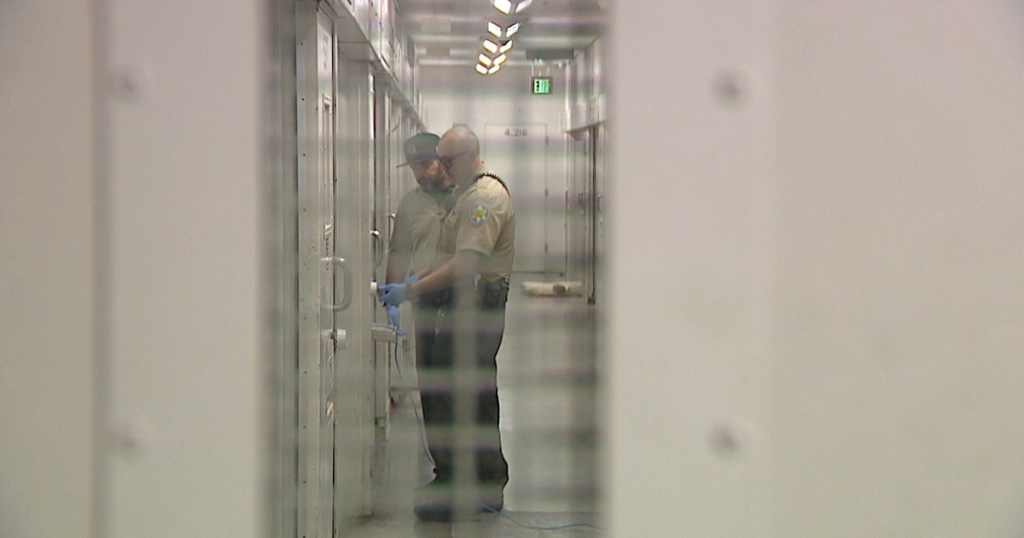PHOENIX — Public safety and law enforcement positions have struggled to fill for years, showing that the problem is not limited to one geographic region of the United States.
However, in Arizona, staffing the critical departments of detention officers and correctional officers was significantly more difficult than other departments.
Sheriffs across the state say they hope a seemingly small law change will turn things around.
House Bill 2203 It would restore retirement benefits to correctional and detention center workers at more than a dozen prisons across the state.
Frank Begin worked at the Maricopa Co. Detention Center for more than 19 years, eventually rising to the rank of sergeant at the Downtown Phoenix Jail.
“I always wanted to go into law enforcement,” Begin said.
After her experience in the field didn't work out in New York, Begin said she found her perfect fit in Maricopa County. Begin has seen his facility fully operational and fully staffed, but he says staff have been feeling the threat of staffing shortages for some time.
“Right now, one police officer is doing almost the work of two people in a housing unit,” Begin said.
Arizona sheriffs say a significant portion of the hiring challenges in the field date back to a 2017 decision to transfer detention and correctional officers to the Public Safety Personnel Retirement System (PSPRS). This decision operates more or less as a 401(k). ) According to Maricopa Sheriff Russ Skinner.
The decision deprived prison workers of the option to receive the pensions available to the majority of public safety workers nationwide.
“The standard in the public safety industry is pensions. We have staff in public safety who deal with very stressful and dangerous environments,” Skinner said. “Our legislators understand that, our law enforcement officers on the streets understand that, our firefighters understand that, even our probation officers understand that. Unfortunately, correctional officers and detention officers are left behind.”
The exchange was also unpopular among the staff, including Begin.
“A 25-year pension is pretty good. I don't know why they took it away in the first place,” he said.
Skinner, himself a 34-year veteran of the MCSO, said the promise of pensions and the 20- to 25-year set length of service for civil servants were big draws to the role. Skinner took office in mid-February as sheriff of the fourth-largest county in the nation by population.
When the switch took place in 2017, county jail officials were locked into a program that few wanted.
“In 2017, our detention facilities were nearly fully staffed,” Skinner said. “Currently, there are 780 detention officer vacancies.” [in Maricopa County alone]. ”
The county began to struggle with recruitment due to the lack of public employee pensions and was struggling to retain staff already in the jail. Skinner said Maricopa County has hired more than 800 people for detention and corrections roles since 2017. Only about 400 people remain, most of them long-term employees with more than five years of experience.
Skinner said other factors that have come to light in recent years, such as increased skepticism about law enforcement, are also hurting the hiring process, but the biggest challenge lies in switching retirement plans.
Unlike other understaffed businesses, prison officials can't just close up shop and recoup their losses the next day. When prisons are understaffed and officers are left working long hours, public safety is at risk, Skinner said.
“The ripple effect is that there are certainly going to be vacancies. And what does that mean and how do we scale back?” [jail] population? We are not seeing a decline in people committing crimes,” Skinner added.
Now, Skinner and other Copper County sheriffs are sponsoring HB 2203, a bill that would restore prison employee pensions while minimizing the financial impact on taxpayers. This bill would incorporate prison employees into the Correctional Officer Retirement Plan (CORP). Documents available on the Arizona House of Representatives website do not provide exact numbers on the financial impact, but supporters say the plan would represent an approximately 2% increase in regular correctional officer retirement benefits. He said he was deaf. Cost rate to the company funding the retirement.
The bill awaits a final vote in committee. In the meantime, staffers like Biggin, just down the road from Arizona House, say they plan to keep showing up.
“We feel it every day here at the prison. If we didn't have seven to 10 officers working overtime every day, we would be hurting badly,” he said.







